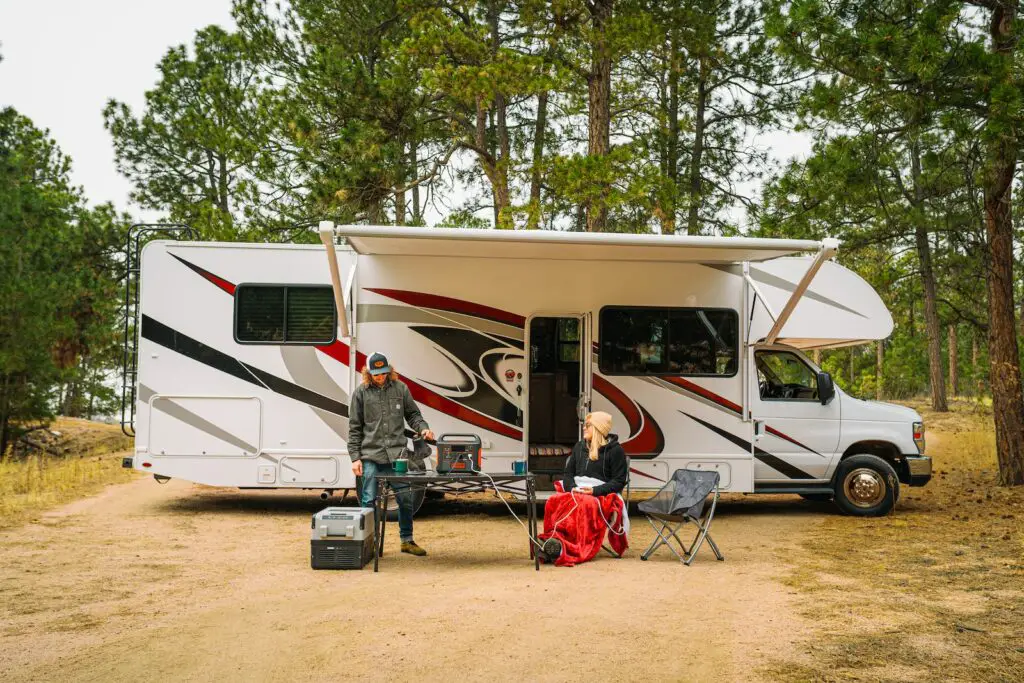Portable power stations, also known as solar generators, have become increasingly popular for their ability to provide clean and reliable energy.
Whether you need backup power during emergencies, want to go off-grid, or enjoy outdoor activities, having a reliable portable power station is essential.
Portable power stations store electricity and can be used to power a variety of devices, including laptops, phones, cameras, and appliances.
They are typically powered by lithium-ion batteries, which are lightweight and have a high energy density.
Portable power stations come in a variety of sizes and capacities.
Some models are small enough to fit in a backpack, while others are large enough to power a small home.
Jackery and Bluetti are two of the most popular brands of portable power stations.
Both companies offer a wide range of models to choose from, but two of their most affordable models are the Jackery Explorer 500 and the Bluetti EB70.
Which Would Be the Better Pick?
While the Bluetti EB70 offers a higher battery capacity and greater power output, its bulkier design, issues with the ECO mode, and the inefficient AC adapter design make it less appealing for general use.
The Jackery 500, in contrast, offers a more user-friendly and practical solution for most everyday scenarios without the extra weight and complexity.
For users seeking a reliable, portable, and versatile solar generator for small to medium power requirements, I would recommend the Jackery 500.
Comparison Between Jackery 500 Vs Bluetti EB70
The Jackery Explorer 500 is a popular portable power station known for its reliability and compact design.
With a 518Wh capacity, it provides a good balance between portability and power output.
It's equipped with multiple outputs, including USB, AC, and DC ports, making it versatile for charging various devices, from smartphones to small appliances.
The built-in display provides real-time data on charge and discharge rates, as well as battery levels.
The Jackery 500 is highly regarded for its build quality and performance, making it perfect for camping adventures, power blackouts, and other off-grid scenarios.
Best For:
- Charging small electronic devices.
- Running small appliances.
- Powering camping equipment.
- Users needing a lightweight, portable option for low to medium power requirements.
Advantages:
- Lighter weight (13.32 lbs) enhances portability.
- Compact and sleek design.
- Sufficient for basic outdoor activities and small-scale power needs.
- Multiple charging options including AC, DC, and solar.
Good for users prioritizing design and ease of transportation over higher power capacity.
The Bluetti EB70 solar generator has several advantages like its affordability and wireless charging feature, but it faces notable drawbacks.
A primary issue is the default setting of the ECO mode being off, which leads to unintentional battery discharges due to its subtle indicators.
The EB70 experiences no-load loss, with specific rates of power loss in various modes. Despite these concerns, the EB70 can output 700W with a surge capacity of 1400W, handling moderate power demands like a 500W electric heater well but struggles with higher settings.
The design is criticized for being bulky and unattractive, and the unit lacks the high-speed charging capabilities of its competitors.
The AC adapter design is inefficient, being oversized and noisy.
Best For:
- Running larger appliances like laptops, mini-fridges, and power tools.
- Longer duration usage due to higher battery capacity.
- Users needing a robust option for medium to high power requirements.
Advantages:
- Higher battery capacity (716Wh) for extended use.
- Greater power output (1000W) suitable for a broader range of devices.
- More diverse charging options including AC, DC, USB-A, USB-C, and solar.
- Faster recharge times, especially beneficial in time-sensitive situations.
- Ideal for off-grid living, RV trips, and emergency home backup where higher power demand is expected.
Table Comparison Between Jackery 500 vs. Bluetti EB70
| Jackery 500 | Bluetti EB70 | |
| Battery capacity | 518 Wh | 716 Wh |
| AC output | 500 W | 1,000 W |
| DC output | 12V, 10A | 12V, 10A |
| USB output | 3x USB-A (5V, 2.4A) | 2x USB-A (5V, 2.4A) |
| USB-C output | 1x USB-C PD (60W) | 1x USB-C PD (100W) |
| Wireless charging | No | Yes |
| LCD display | Yes | Yes |
| Charge time (AC) | 7.5 hours | 3.5 hours |
| Charge time (solar) | 9.5 hours | 6 hours |
| Weight | 13.3 lbs | 21.4 pounds |
| Dimensions | 11.8 x 7.6 x 9.2 inches | 12.6*8.5*8.7 inches |
| Warranty | 2 years | 2 years |










